Perfecting your darts aim practice is the quickest way to improve your game and consistently hit your target; this article will teach you effective techniques and drills to develop pinpoint accuracy. We’ll explore stance, grip, release, mental focus, and structured practice routines to elevate your darting skills.
⚠️ Still Using Pen & Paper (or a Chalkboard)?! ⚠️
Step into the future! The Dart Counter App handles all the scoring, suggests checkouts, and tracks your stats automatically. It's easier than you think!
Try the Smart Dart Counter App FREE!Ready for an upgrade? Click above!
Mastering Your Stance for Improved Darts Aim Practice
Your stance in darts is the foundation upon which all your throws are built. A stable and consistent stance will minimize unnecessary movement and help you maintain your darts aim practice focus. There are three primary stances: the front-on stance, the side-on stance, and the angled stance. Experiment to find what feels most natural and balanced for you.
- Front-On Stance: Feet are aligned directly facing the board. This stance provides maximum stability but can restrict upper body movement.
- Side-On Stance: Your dominant side faces the board, with your non-dominant foot slightly behind. This allows for more upper body rotation and a smoother throw.
- Angled Stance: A compromise between the two, offering a balance of stability and movement. Most players find an angled stance the most comfortable.
Regardless of your chosen stance, ensure your weight is evenly distributed. Avoid leaning too far forward or backward, as this can throw off your balance and affect your darts aim practice. Keep your knees slightly bent and your body relaxed. Consistency is key. Once you’ve found a stance that works, stick with it and practice it regularly. It’s also crucial to consider the position of your throwing arm in relation to your body. Experiment with holding your arm slightly away from your body or closer to your body to see what feels most comfortable and allows for the most natural throwing motion. Remember, the goal is to minimize any tension or strain in your body that could impact your accuracy. Also, make sure you have the right darts match belfast accessories
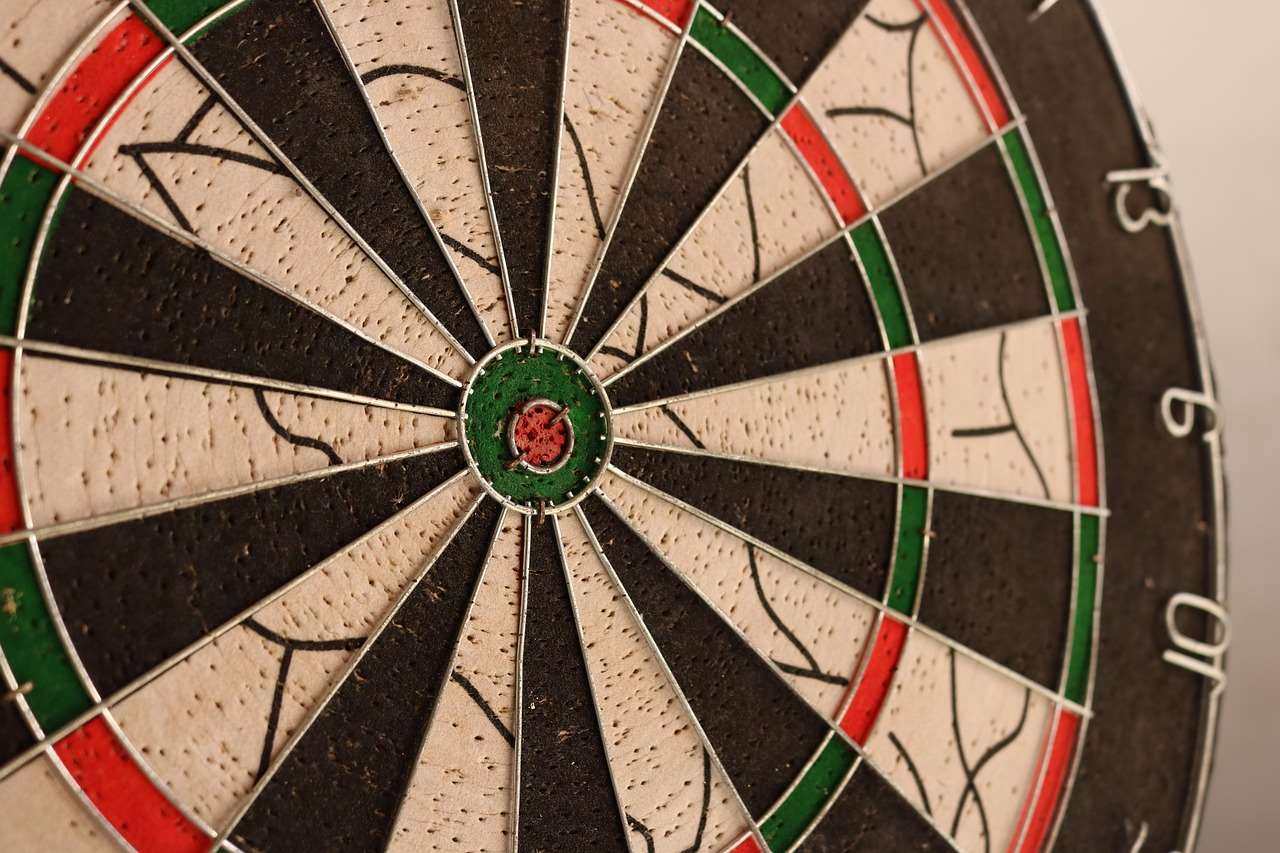
The Perfect Grip: A Crucial Element in Darts Aim Practice
The grip is another critical component of your darts aim practice. It’s how you connect with the dart and control its trajectory. There’s no single “perfect” grip; it’s highly personal and depends on the size and shape of your hand, as well as your throwing style. However, there are some general guidelines to follow:
- Avoid Gripping Too Tightly: A death grip will cause tension in your arm and wrist, leading to inconsistent throws. A relaxed grip allows for a smoother release.
- Find Your Balance Point: Experiment with different grip points on the dart barrel to find the point where the dart feels most balanced in your hand.
- Consistency is Key: Once you’ve found a comfortable grip, stick with it. Don’t change your grip constantly, as this will disrupt your muscle memory.
Many players use a three-finger grip, with the thumb, index finger, and middle finger providing the primary control. Others prefer a four-finger grip, adding the ring finger for extra stability. Experiment with different grips to find what feels most natural and gives you the best control over the dart. Consider the texture of your dart barrel as well. A knurled or textured barrel can provide a more secure grip, especially if you have sweaty hands. You might also want to explore using dart wax or grip enhancers to improve your grip. Different dart materials (brass, tungsten, nickel) will also impact grip and feel.
Experimenting with Different Grip Styles
Don’t be afraid to experiment with different grip styles until you find one that feels comfortable and allows you to consistently hit your target. Try these variations:
- The Pencil Grip: Holding the dart like a pencil.
- The Power Grip: A firmer grip using more fingers.
- The Fingertip Grip: Holding the dart primarily with your fingertips for a more delicate touch.
Remember to be patient and persistent in your experimentation. It may take time to find the perfect grip that suits your individual throwing style and hand size. Don’t get discouraged if you don’t see immediate results. With consistent practice and a willingness to adjust, you’ll eventually find the grip that maximizes your accuracy and control. Also, think about downloading a Digital dart score app to make sure you are on track.
The Release: Timing and Smoothness for Precision in Darts Aim Practice
The release is where all your previous efforts come together. A smooth, controlled release is essential for accurate darts aim practice. Avoid jerky or abrupt movements, as these will throw off your aim. Focus on releasing the dart at the same point in your throwing motion every time.
- Follow Through: Extend your arm fully towards the target after releasing the dart. This helps maintain a consistent throwing motion.
- Wrist Flick: A slight flick of the wrist can add power and control to your throw. However, avoid overdoing it, as this can lead to inconsistency.
- Timing is Everything: Practice releasing the dart at the same point in your swing every time. This will help you develop a consistent rhythm.
Visualizing the release point can be helpful. Imagine a specific point in space where you want to release the dart. Focus on hitting that point with each throw. Consider using a mirror to observe your release and identify any inconsistencies. Pay attention to the angle of your wrist, the extension of your arm, and the overall smoothness of your motion. The smoother the delivery, the more reliable your where to aim darts will be.
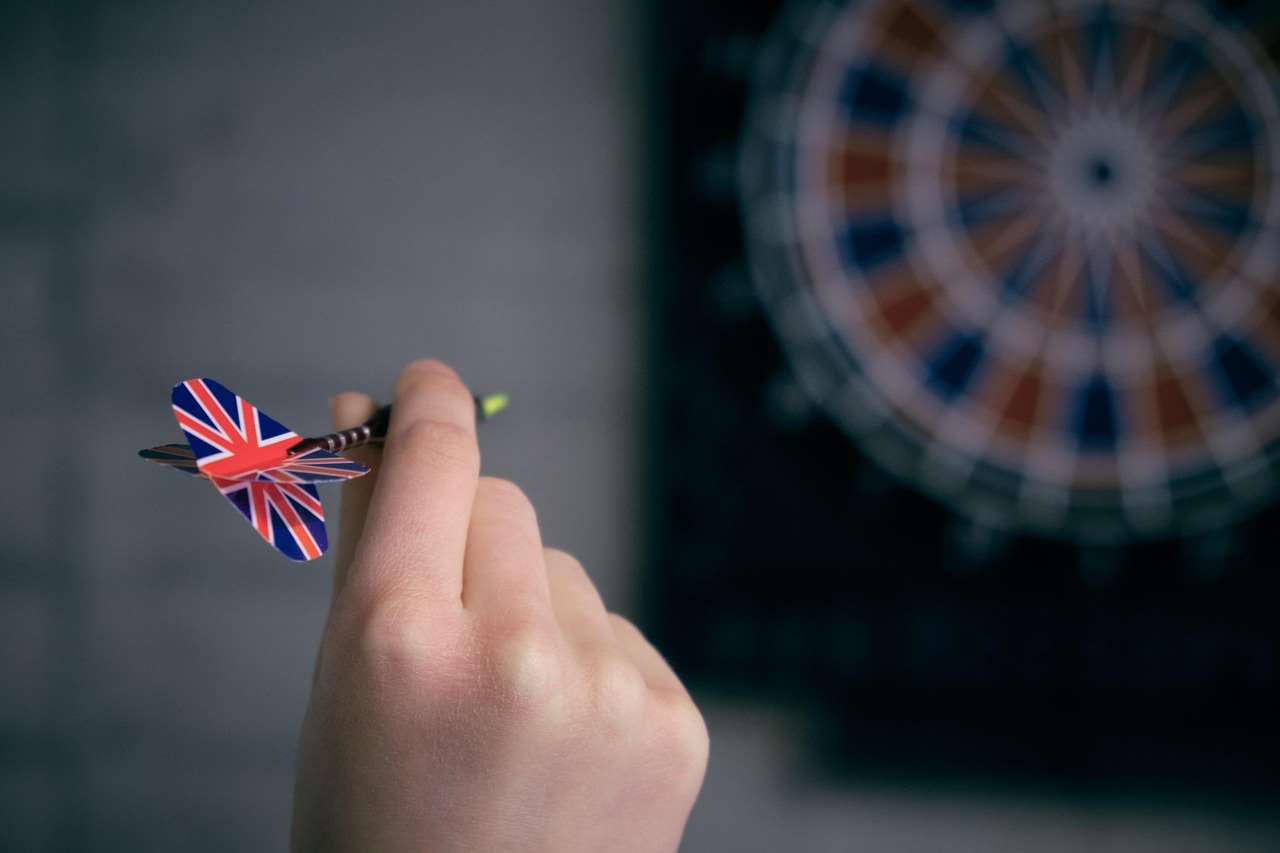
Mental Focus and Visualization in Darts Aim Practice
Mental focus is just as important as physical technique in darts aim practice. It’s about being present in the moment and concentrating on the task at hand. Distractions and negative thoughts can significantly impact your performance. Before each throw, take a deep breath and visualize the dart hitting your target. This helps to calm your nerves and focus your mind.
- Block Out Distractions: Find ways to minimize distractions, whether it’s using earplugs or focusing on a specific point on the dartboard.
- Positive Self-Talk: Replace negative thoughts with positive affirmations. Believe in your ability to hit your target.
- Visualization Techniques: Before each throw, visualize the dart flying through the air and hitting the target. This helps to program your subconscious mind for success.
Consider practicing mindfulness techniques to improve your focus. Meditation or deep breathing exercises can help you calm your mind and stay present in the moment. Remember that even the best dart players experience moments of doubt and frustration. The key is to learn how to manage those emotions and stay focused on your goal. Develop a pre-throw routine that helps you center yourself and focus your mind. This could involve taking a specific number of breaths, focusing on a particular point on the board, or repeating a positive affirmation. Consistency in your routine will help you maintain focus under pressure.
Dealing with Pressure and Nerves
Pressure and nerves are a natural part of any competitive sport. The ability to manage these emotions is crucial for success in darts. Here are some tips for dealing with pressure:
- Practice Under Pressure: Simulate game-like conditions during your practice sessions to get used to playing under pressure.
- Focus on the Process, Not the Outcome: Concentrate on executing your technique correctly, rather than worrying about the score.
- Embrace the Challenge: View pressure as an opportunity to test your skills and improve your game.
Remember that everyone makes mistakes. Don’t dwell on missed throws. Instead, learn from them and move on. The ability to bounce back from setbacks is a sign of mental toughness. Practice dlz darts to improve your technique. A good mindset can be trained just like your physical throwing technique, and can elevate your darts aim practice.
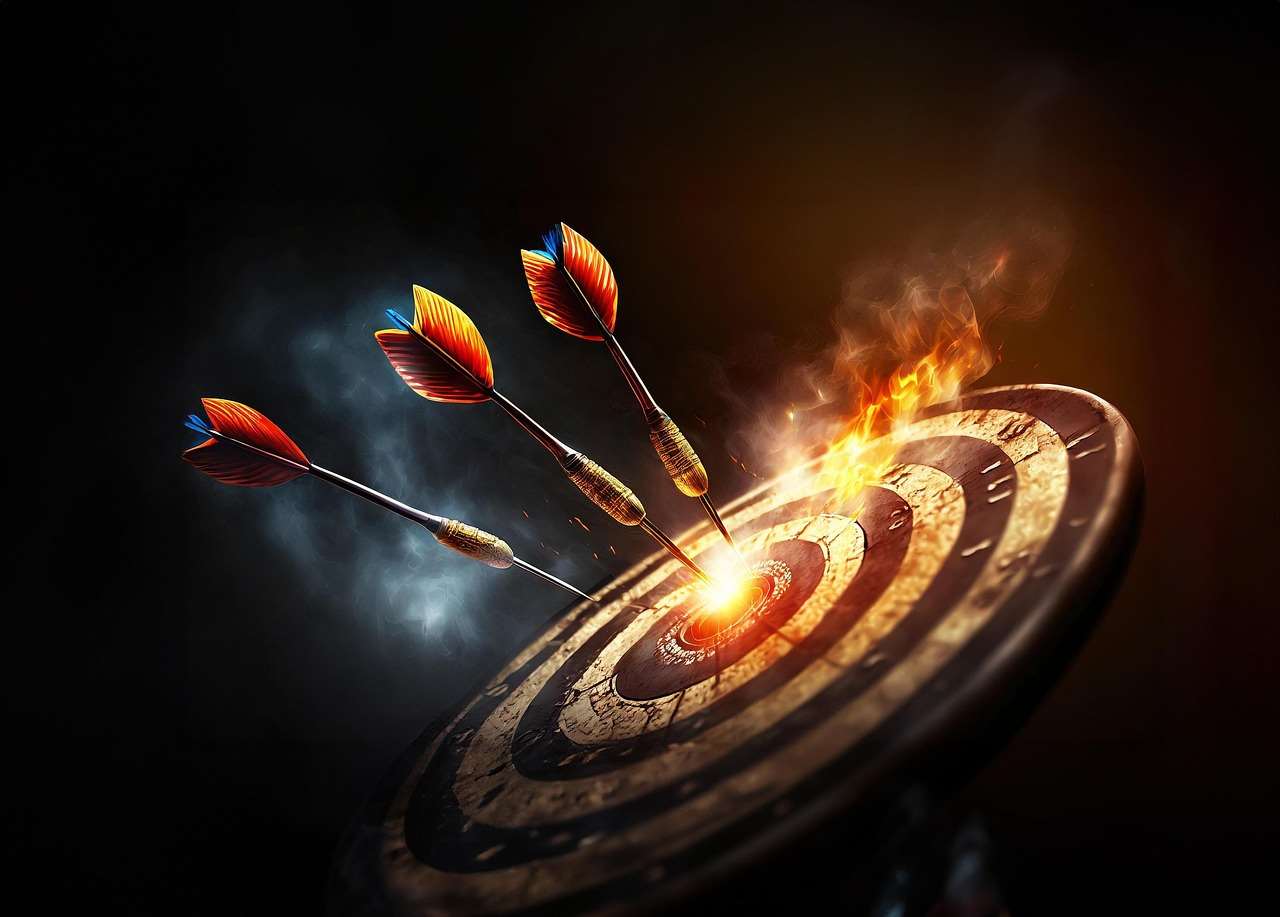
Structured Darts Aim Practice Routines for Improvement
Randomly throwing darts is not the most effective way to improve your darts aim practice. A structured practice routine is essential for developing consistency and accuracy. Designate specific areas to focus on during each practice session. For example, you might spend one session focusing on hitting doubles, another on triples, and another on the bullseye.
- The Around the Clock Drill: Start at number one and try to hit each number in sequence. This is a great way to improve your accuracy and consistency.
- The Shanghai Drill: Try to hit the single, double, and triple of a specific number in one turn. This drill helps you develop your grouping skills.
- The Checkout Drill: Practice common checkout combinations to improve your game strategy.
Set realistic goals for each practice session. Don’t try to do too much at once. Focus on making small, incremental improvements. Keep track of your progress to stay motivated. Record your scores, your grouping accuracy, and any other relevant metrics. This will help you identify areas where you need to improve. Use a darts connect pdc app to track progress. Consider practicing with a partner or joining a local darts league. Playing against other players will expose you to different styles and strategies, and it will also help you develop your competitive skills.
Varying Your Practice Drills
To prevent boredom and maintain motivation, it’s important to vary your practice drills regularly. Try these variations:
- Handicap Games: Play against a stronger player and give yourself a handicap to make the game more challenging.
- Target Practice with Restrictions: Set limitations on your throws, such as only using certain fingers or throwing from a specific stance.
- Blindfolded Practice (Advanced): This drill can help you develop your muscle memory and improve your feel for the dart. (Proceed with caution and ensure a safe environment.)
Remember that practice makes permanent, not perfect. Focus on practicing the right techniques and developing good habits. Avoid practicing mistakes, as this will only reinforce them. Be patient and persistent in your practice efforts. It takes time and dedication to develop the skills needed to become a successful dart player. With consistent effort and a structured practice routine, you can achieve your goals and improve your darts aim practice.
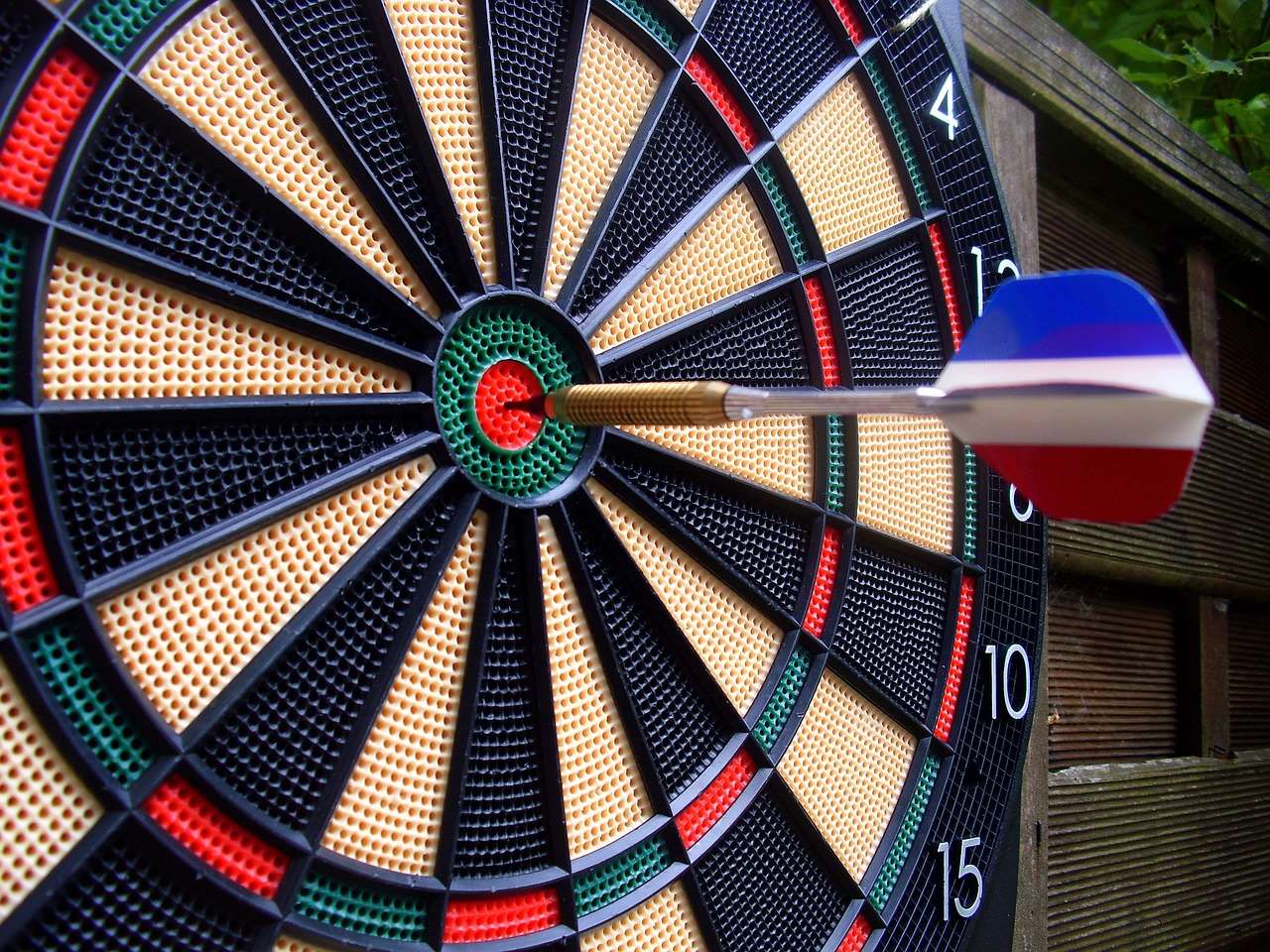
Equipment Considerations: Darts and Dartboards
The quality of your equipment can also affect your darts aim practice. Invest in a good set of darts that feels comfortable in your hand and is balanced to your liking. Experiment with different weights, shapes, and materials to find what works best for you. Also, make sure you have a high-quality dartboard that is well-maintained. A worn or damaged dartboard can lead to deflections and inaccurate scores.
- Dart Weight: Darts typically range in weight from 18 to 30 grams. Heavier darts are generally more stable, while lighter darts are more maneuverable.
- Dart Material: Darts are typically made of brass, nickel, or tungsten. Tungsten darts are denser and more expensive, but they allow for slimmer barrels, which can improve grouping.
- Dartboard Quality: Look for a dartboard made of high-quality sisal fibers. These boards are more durable and self-healing.
Regularly rotate your dartboard to distribute wear evenly. This will help to prolong its life and maintain its accuracy. Keep your dartboard clean by wiping it down with a damp cloth. Avoid using harsh chemicals or abrasive cleaners. Replacing your dartboard regularly ensures consistent practice. The setup of your board is also important. Using the correct height and distance from the oche can help to ensure a steady darts aim practice.
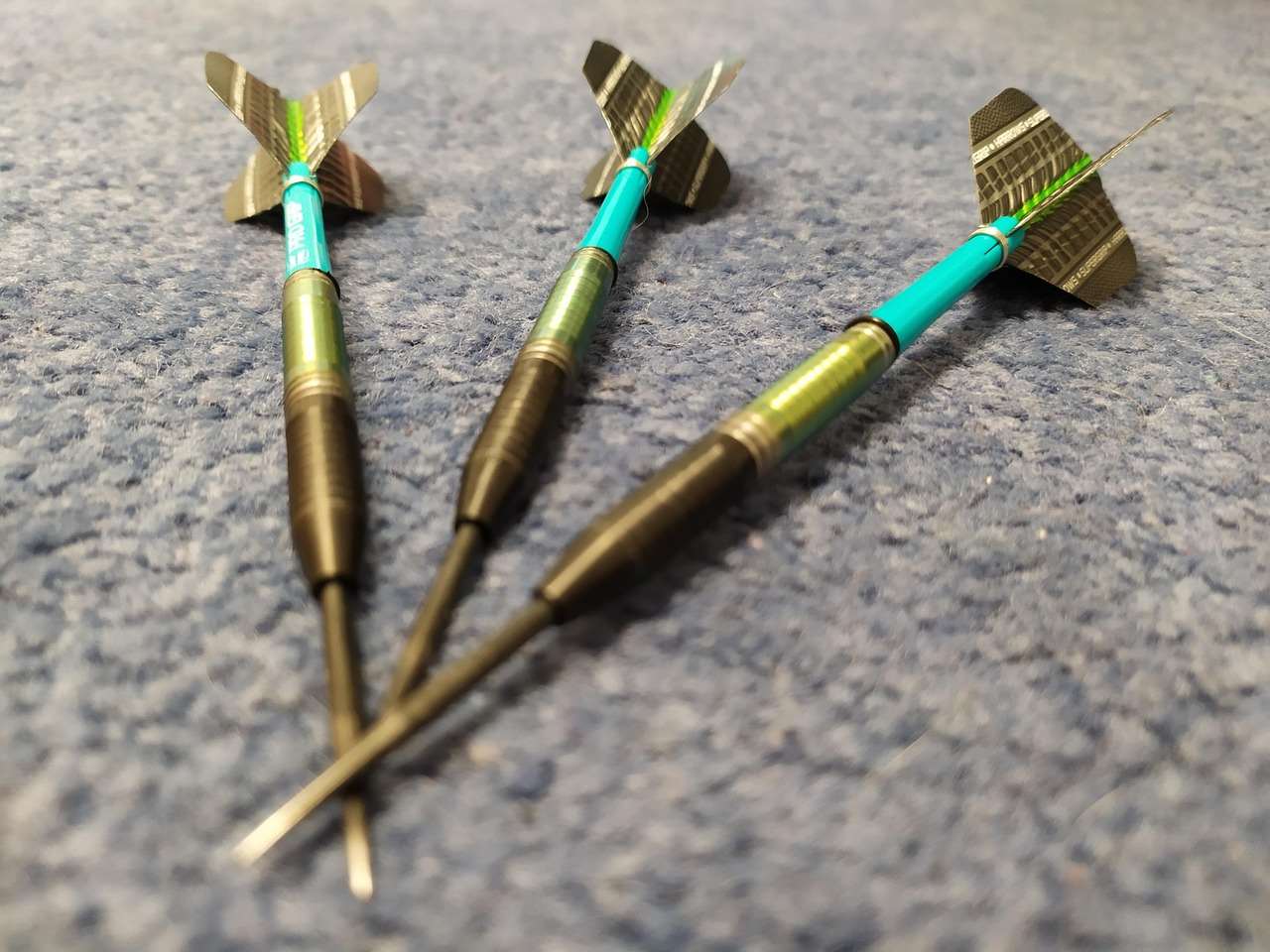
Analyzing Your Darts Throwing Technique
Filming your throwing technique is an excellent way to identify areas for improvement. By reviewing the video, you can objectively assess your stance, grip, release, and follow-through. Pay close attention to any inconsistencies or flaws in your motion. Compare your technique to that of professional dart players. Watch videos of top players and analyze their throwing style. Look for similarities and differences between their technique and yours. Consider seeking feedback from a darts coach or experienced player. A coach can provide valuable insights and help you identify areas where you can improve. They can also help you develop a personalized practice plan tailored to your specific needs and goals. If you have time, you can look at tommys darts.
Remember that improving your darts game is a continuous process. Be patient, persistent, and willing to learn. Embrace the challenges and celebrate your successes. With dedication and hard work, you can achieve your full potential and become a skilled dart player. Darts aim practice doesn’t have to be grueling – make it fun by setting yourself small challenges and rewarding progress.
Conclusion: Consistent Darts Aim Practice Leads to Success
Ultimately, consistent and focused darts aim practice is the key to improving your game. By mastering your stance, grip, release, and mental focus, and by following a structured practice routine, you can develop the accuracy and consistency needed to hit your targets with confidence. Remember to analyze your technique, seek feedback from experienced players, and invest in quality equipment. Start practicing today, and watch your darting skills soar! Remember also, that it is useful to watch darts yesterday, so you have some background knowledge. Download a dart score app and start improving today!
Hi, I’m Dieter, and I created Dartcounter (Dartcounterapp.com). My motivation wasn’t being a darts expert – quite the opposite! When I first started playing, I loved the game but found keeping accurate scores and tracking stats difficult and distracting.
I figured I couldn’t be the only one struggling with this. So, I decided to build a solution: an easy-to-use application that everyone, no matter their experience level, could use to manage scoring effortlessly.
My goal for Dartcounter was simple: let the app handle the numbers – the scoring, the averages, the stats, even checkout suggestions – so players could focus purely on their throw and enjoying the game. It began as a way to solve my own beginner’s problem, and I’m thrilled it has grown into a helpful tool for the wider darts community.